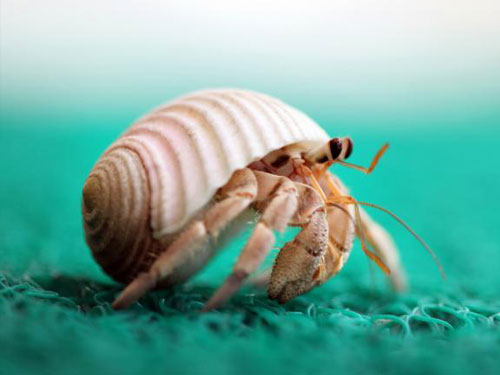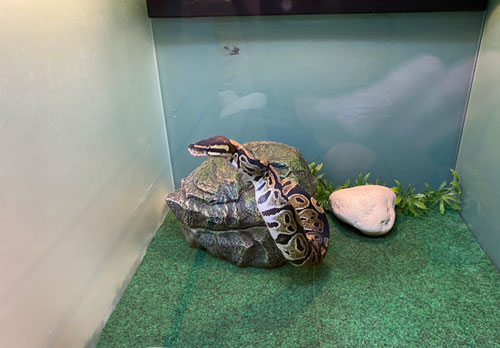Reptiles
We carry a wide variety of reptiles on an ongoing basis. Give us a call to check our current availability.

Tarantulas have been a relatively popular pet now for several years. They are unique, quiet, and need little space, and keeping tarantulas as pets can make a fascinating hobby. However, they aren’t the best choice as a pet to handle very much, largely due to stress and danger to the spider rather than danger to the handler (more on that later). There are many species available in the pet trade in a vary of sizes and appearances, and they are usually easy to care for, but that depends a bit on the species. Because the needs for housing and care will vary for different species, it is important to understand the species being considered as a pet.

Hermit Crabs are very social animals and can live 10 years or more, changing shells, molting several times throughout their lives and growing up to six inches in length. They’re quite docile so you can handle them easily or have fun watching them as they interact, climb and explore with their habitat mates. Great for a family or classroom, Hermit Crabs are low maintenance, non-aggressive and hypoallergenic.
Some Hermit Crab species live on land and others are water dwellers, but all Hermit Crab species are born in the ocean. Land-dwelling Hermit Crabs leave the ocean as adults to live on land. The majority of “hermmies” kept as pets in the United States are Caribbean Land Hermit Crabs, the Coenobita clypeatus species.
Native to the Caribbean, the Coenobita clypeatus have brown heads, purple claws (pincers) and reddish brown legs. They have round eyes and have setae, hair-like filaments, on their legs.

Leopard Geckos make great pets for kids ages 10 and up. They’re friendly, docile creatures by nature, but it’s always best to supervise children when they’re handling the lizards because leos can, on rare occasions, bite. This really only happens if they mistake a finger for food — which isn’t common — or if they’re squeezed too tightly while being held.
It might take time to earn your gecko’s trust, so start by letting it approach and investigate your hand before grabbing and holding it. Kids and adults should be careful never to handle a leopard gecko by its tail (it could break off) and ought to avoid any sudden movements in order to make sure skittish geckos don’t become frightened. Don’t keep leos out of their habitats for extended periods of time, and be sure to wash your hands before and after touching them.
Because they’re nocturnal, leos don’t provide too many fireworks during the day, but they’re often active and entertaining at night while feeding and exploring.

Ball Pythons Ball pythons are so named because when threatened they roll themselves into a tight ball, tucking their head inside their coils. Young ball pythons grow about a foot a year for three years. They can live for 20-30 years with proper care.
Ball pythons are not terribly active snakes so a smaller enclosure is fine (use a 10- to 20-gallon tank for younger snakes and a 30-gallon tank for an adult). They are however adept escape artists so a securely fitted top is absolutely necessary.You have many options for a substrate for your snake including shredded bark, newsprint, and Astroturf. Astroturf is probably the easiest because you can cut a few pieces to fit the cage and simply replace the dirty pieces as necessary (the soiled pieces can be soaked in a solution of one gallon of water with 2 tablespoons of bleach, rinsed well, dried and then used again).
